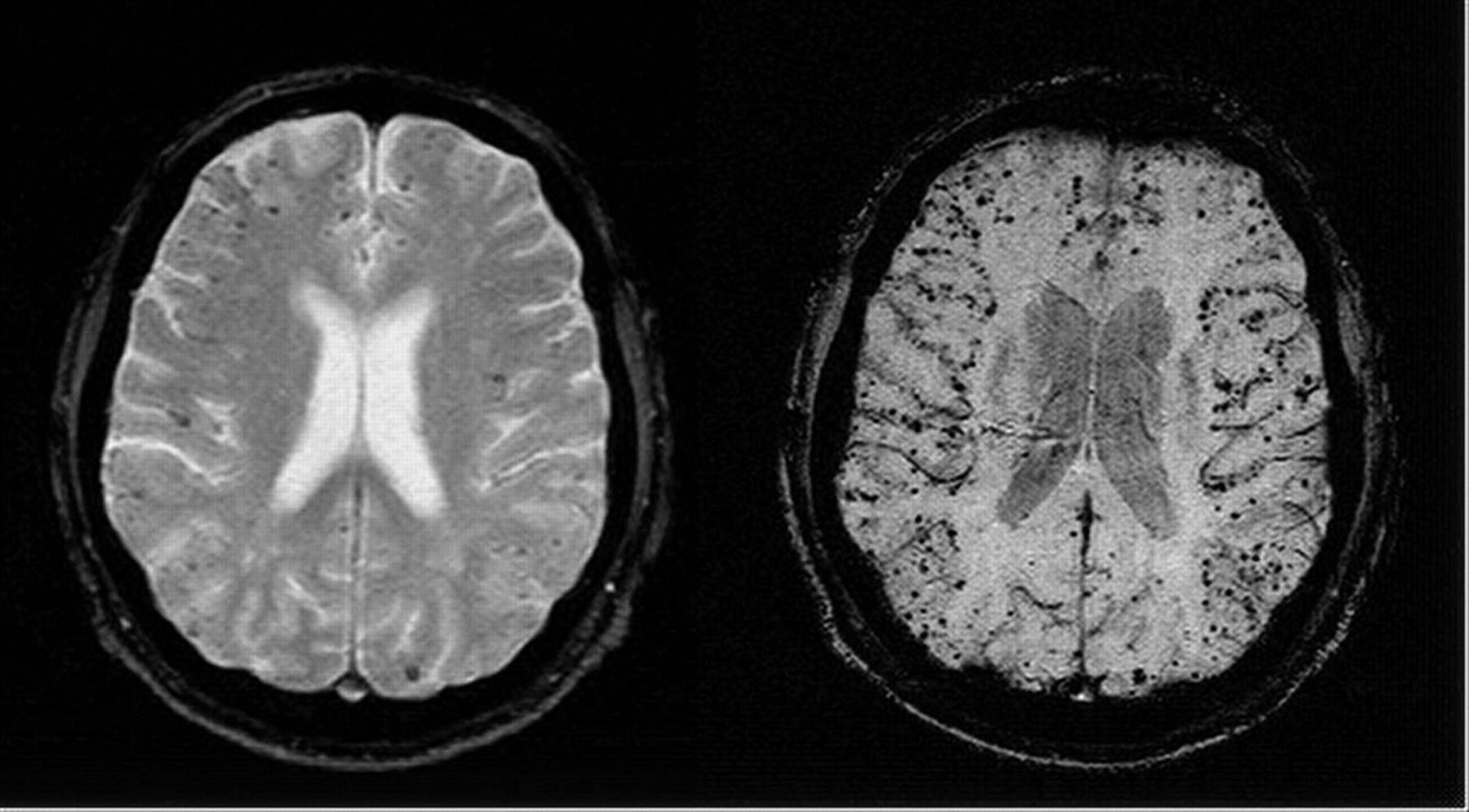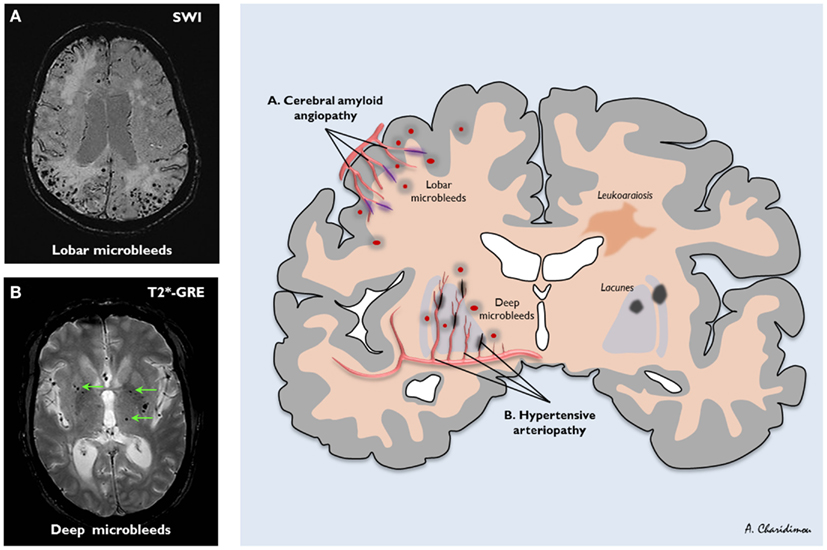Makindo Medical Notes"One small step for man, one large step for Makindo" |
|
|---|---|
| Download all this content in the Apps now Android App and Apple iPhone/Pad App | |
| MEDICAL DISCLAIMER: The contents are under continuing development and improvements and despite all efforts may contain errors of omission or fact. This is not to be used for the assessment, diagnosis, or management of patients. It should not be regarded as medical advice by healthcare workers or laypeople. It is for educational purposes only. Please adhere to your local protocols. Use the BNF for drug information. If you are unwell please seek urgent healthcare advice. If you do not accept this then please do not use the website. Makindo Ltd. |
Cerebral Amyloid angiopathy (CAA)
-
| About | Anaesthetics and Critical Care | Anatomy | Biochemistry | Cardiology | Clinical Cases | CompSci | Crib | Dermatology | Differentials | Drugs | ENT | Electrocardiogram | Embryology | Emergency Medicine | Endocrinology | Ethics | Foundation Doctors | Gastroenterology | General Information | General Practice | Genetics | Geriatric Medicine | Guidelines | Haematology | Hepatology | Immunology | Infectious Diseases | Infographic | Investigations | Lists | Microbiology | Miscellaneous | Nephrology | Neuroanatomy | Neurology | Nutrition | OSCE | Obstetrics Gynaecology | Oncology | Ophthalmology | Oral Medicine and Dentistry | Paediatrics | Palliative | Pathology | Pharmacology | Physiology | Procedures | Psychiatry | Radiology | Respiratory | Resuscitation | Rheumatology | Statistics and Research | Stroke | Surgery | Toxicology | Trauma and Orthopaedics | Twitter | Urology
Related Subjects: |Acute Stroke Assessment (ROSIER&NIHSS) |Atrial Fibrillation |Atrial Myxoma |Causes of Stroke |Ischaemic Stroke |Cancer and Stroke |Cardioembolic stroke |CT Basics for Stroke |Endocarditis and Stroke |Haemorrhagic Stroke |Stroke Thrombolysis |Hyperacute Stroke Care
🧠 Cerebral Amyloid Angiopathy (CAA) = amyloid-β deposition in walls of small/medium cerebral vessels → fragility → recurrent lobar ICH. 💡 Suspect in age >70, lobar haemorrhage, no hypertension history.
📖 Introduction
- CAA = common cause of intracerebral haemorrhage (ICH) in elderly.
- Deposition of β-amyloid in cortical/leptomeningeal arteries Pantoni 2010.
- Different from systemic amyloidosis.
- Inflammatory variant (CAA-RI) exists and can be steroid-responsive Moussaddy 2015.
⚙️ Aetiology
- Deposition of amyloid-β fibrils in vessel walls (mainly leptomeningeal & cortical arteries).
- Frequently co-exists with Alzheimer’s, but only some CAA patients develop dementia.
- ICH in CAA increases risk of later cognitive decline.
🧬 Genetics
- Linked to ApoE ε2 and ε4 alleles.
- Hereditary forms are rare, earlier and more severe:
- Dutch type: APP mutation (Chr 21). Lobar ICH in midlife ± dementia.
- Icelandic type: Cystatin C mutation. Young adults. ICH + dementia, brainstem/cerebellar involvement.
🔬 Pathology
- CAA is a leading cause of lobar haemorrhage in older patients.
- Lobar bleeds (temporal/occipital > frontal/parietal). Contrast: hypertensive bleeds = deep (putamen, thalamus, pons).
- Microscopy → β-amyloid in media & adventitia of small/medium arteries; Congo red +ve.
🩺 Clinical Features
- Spontaneous lobar ICH: headache, seizures, focal neurology.
- Coma = poor prognosis.
- “Amyloid spells” (TIA-like focal deficits due to small bleeds/SAH).
- Recurrent micro/macrobleeds, sometimes provoked by mild trauma, thrombolysis or antithrombotics.
- Progressive cognitive decline if multiple bleeds.
🖼️ Investigations & Imaging
- CT: Acute lobar haemorrhage, often cortical/subcortical. May recur in different lobes. Deep nuclei usually spared.
- MRI T2*/GRE/SWI: Detects old bleeds (haemosiderin). Microbleeds <10 mm = round, low-signal foci.
- CAA-RI: Dramatic oedema on T2 MRI, often steroid-responsive.
- CTA/MRA/CTV: If alternative vascular causes suspected.
- PET: Research tool only.
- Genetics: ApoE typing in research; APP/Cystatin C in suspected familial cases.
- Histology: Congo red staining of biopsy/post-mortem brain confirms amyloid.
🧾 Boston Criteria (1990, revised)
| Category | Definition |
|---|---|
| Definite | Post-mortem: lobar haemorrhage + severe CAA, no other cause. |
| Probable with pathology | Lobar haemorrhage + biopsy/haematoma specimen showing amyloid, no other cause. |
| Probable | Age >60, multiple lobar bleeds on CT/MRI, no other cause. |
| Possible | Age >60, single lobar bleed, no other cause. |
🚩 Differentials
- Hypertensive deep bleed.
- Lobar extension from putaminal ICH.
- Haemorrhagic infarct transformation.
- AVM or haemorrhagic tumour.
- Venous sinus thrombosis.
📉 Complications
- Recurrent ICH.
- Seizures.
- Hydrocephalus (rare).
- Dementia (stepwise or progressive).
💊 Management
- ⚠️ Avoid antiplatelets, anticoagulants, thrombolysis if possible.
- Standard haemorrhagic stroke care (BP, ICP, seizure control).
- Falls prevention (reduce trauma risk).
- Surgery for life-threatening bleeds in selected cases.
- Long-term care: dementia management, seizure prophylaxis, vascular risk reduction.


📚 References
- Knudsen KA, Rosand J, Karluk D. Clinical diagnosis of CAA: Boston criteria. Neurology. 2001;56(4):537–9.
- CAA Systematic Review. J Clin Neurol 2011;7:1–9
- Radiopaedia – CAA Imaging
💡 Exam Pearls:
– Think CAA if age >70 + lobar haemorrhage + normotension.
– MRI T2*/GRE detects microbleeds → “pepper pot” cortex.
– Avoid anticoagulation/antiplatelets unless absolutely necessary.
– Inflammatory CAA variant (CAA-RI) may improve with steroids.